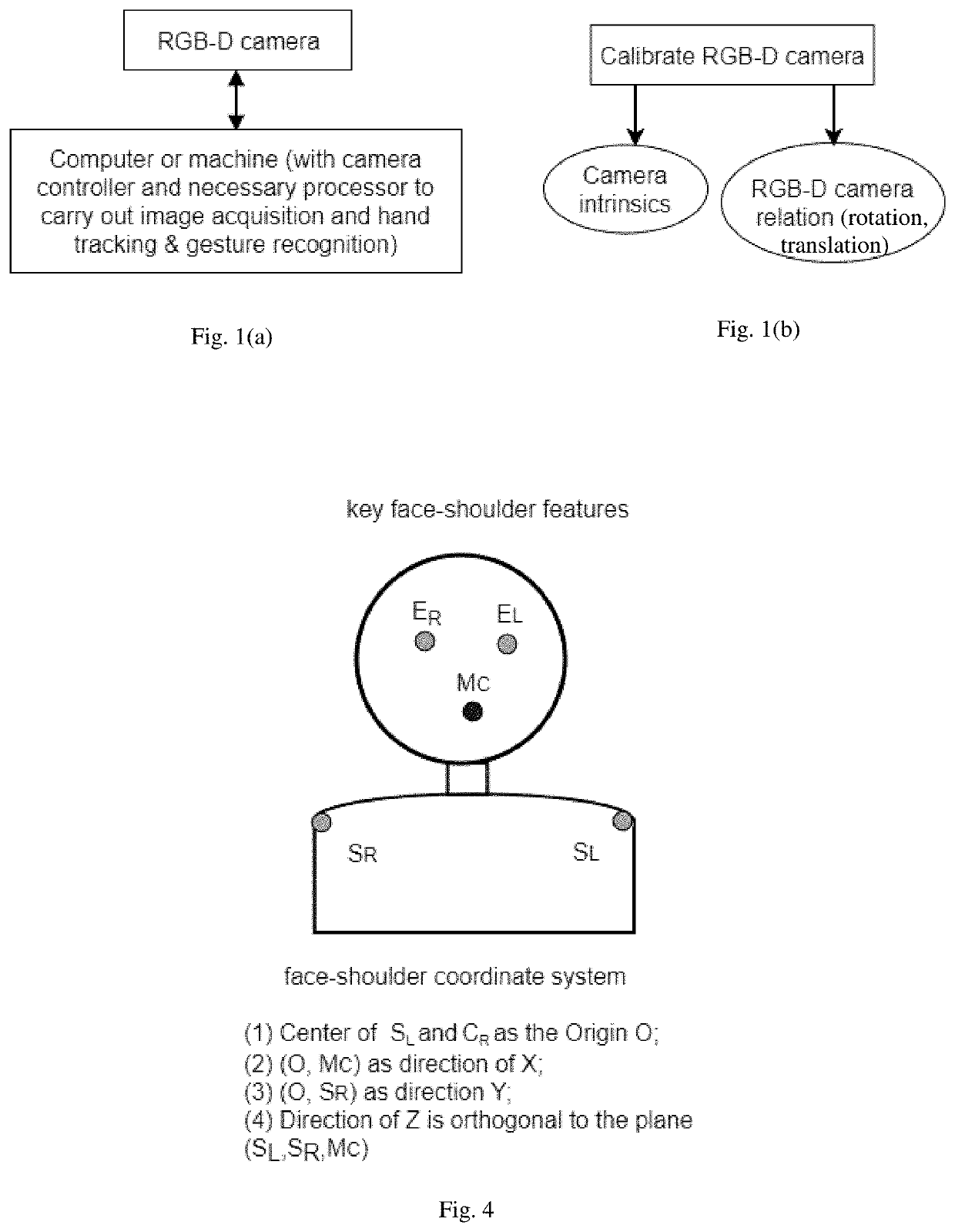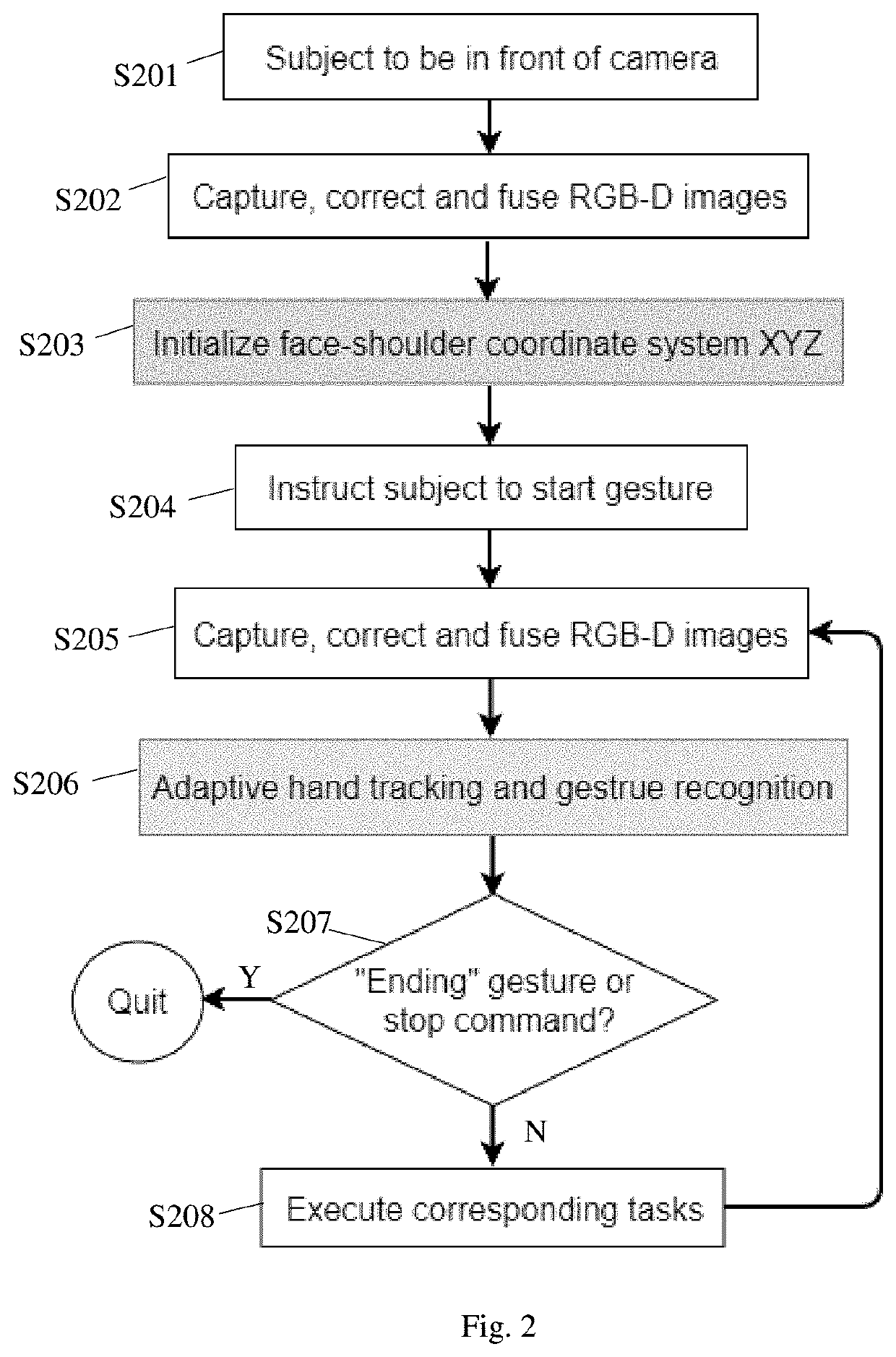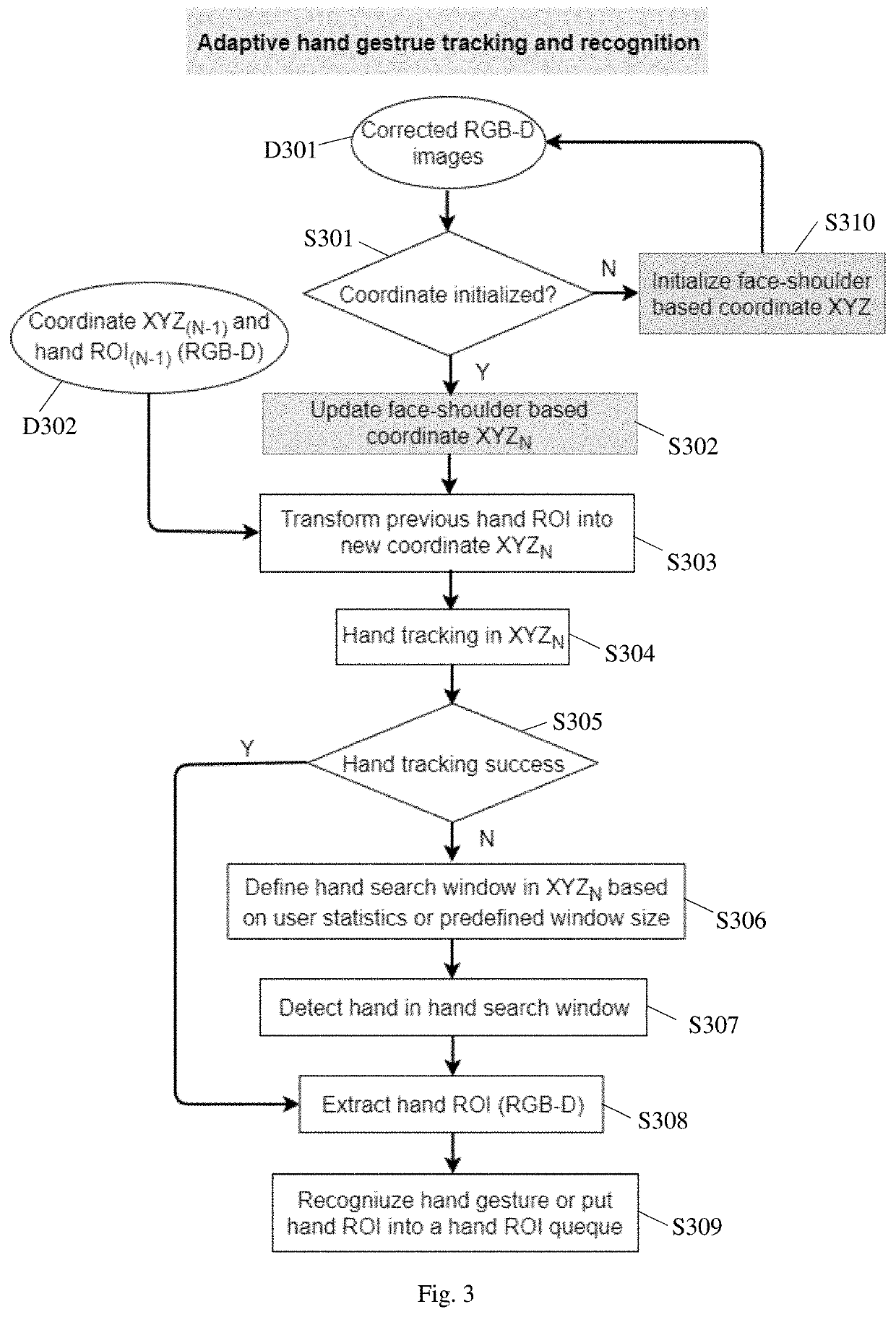Adaptive hand tracking and gesture recognition using face-shoulder feature coordinate transforms
- Summary
- Abstract
- Description
- Claims
- Application Information
AI Technical Summary
Benefits of technology
Problems solved by technology
Method used
Image
Examples
Embodiment Construction
[0022]The hand tracking and gesture recognition methods according to embodiments of the present invention are based on the inventors' insights and recognition of the fact and assumption that for many HCI applications, most of the time when a person performs hand gestures, the hand is held in front of the upper body. There are some dominant features associated with the human upper body that are relatively easy and robust to detect, for example, the features on the face (eyes, eyebrows, mouth and nose etc.), the shoulder extremes (approximately the upper and outer end point of each shoulder), etc. As such, in embodiments of the present invention, in the first step of hand tracking and gesture recognition, these features on the face and shoulder (called face-shoulder features in this disclosure) are detected, and their geometrical relations are used to judge whether the face / head has turned to the side relative to the shoulder. If not, a coordinate system (referred to as the face-shoul...
PUM
 Login to View More
Login to View More Abstract
Description
Claims
Application Information
 Login to View More
Login to View More - R&D Engineer
- R&D Manager
- IP Professional
- Industry Leading Data Capabilities
- Powerful AI technology
- Patent DNA Extraction
Browse by: Latest US Patents, China's latest patents, Technical Efficacy Thesaurus, Application Domain, Technology Topic, Popular Technical Reports.
© 2024 PatSnap. All rights reserved.Legal|Privacy policy|Modern Slavery Act Transparency Statement|Sitemap|About US| Contact US: help@patsnap.com










